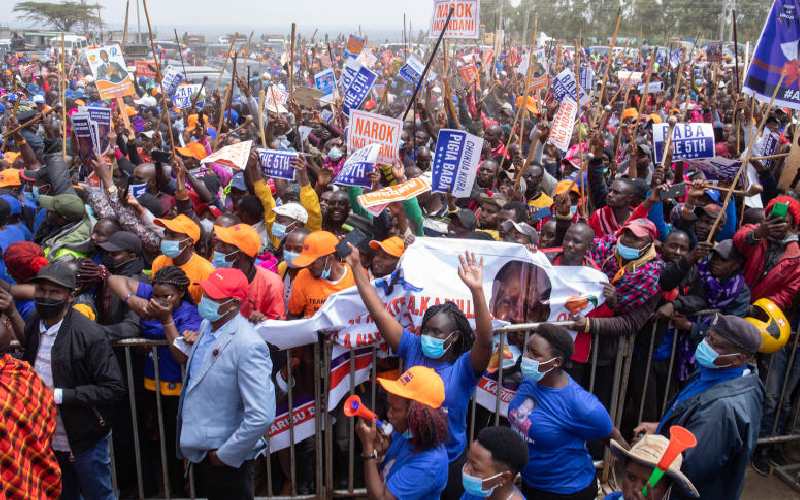×
The Standard e-Paper
Fearless, Trusted News

Supporters of ODM leader Raila Odinga in Ololunga Narok County. [Emmanuel Wanson]
Listening to political discourse in my neck of the woods as well as nationally, and in considering prevalent ideas about how to develop Laikipia, and rural Kenya, I can distil some frame of reference. But first a disclaimer. They are not documented theories. Rather, what follows here is my own interpretation of what politicians are saying.